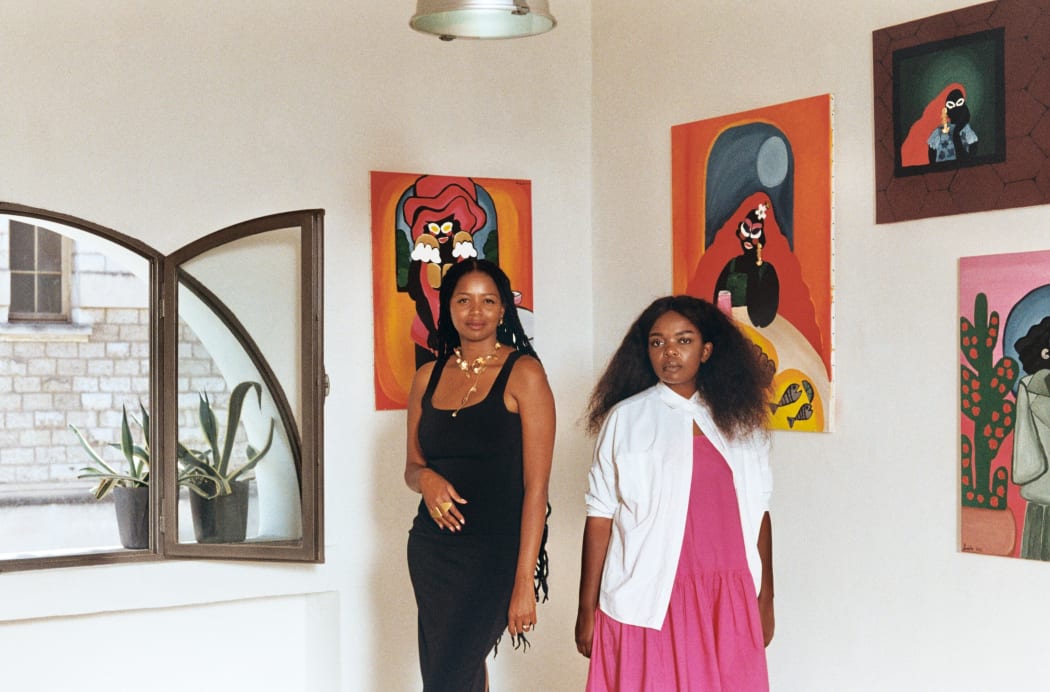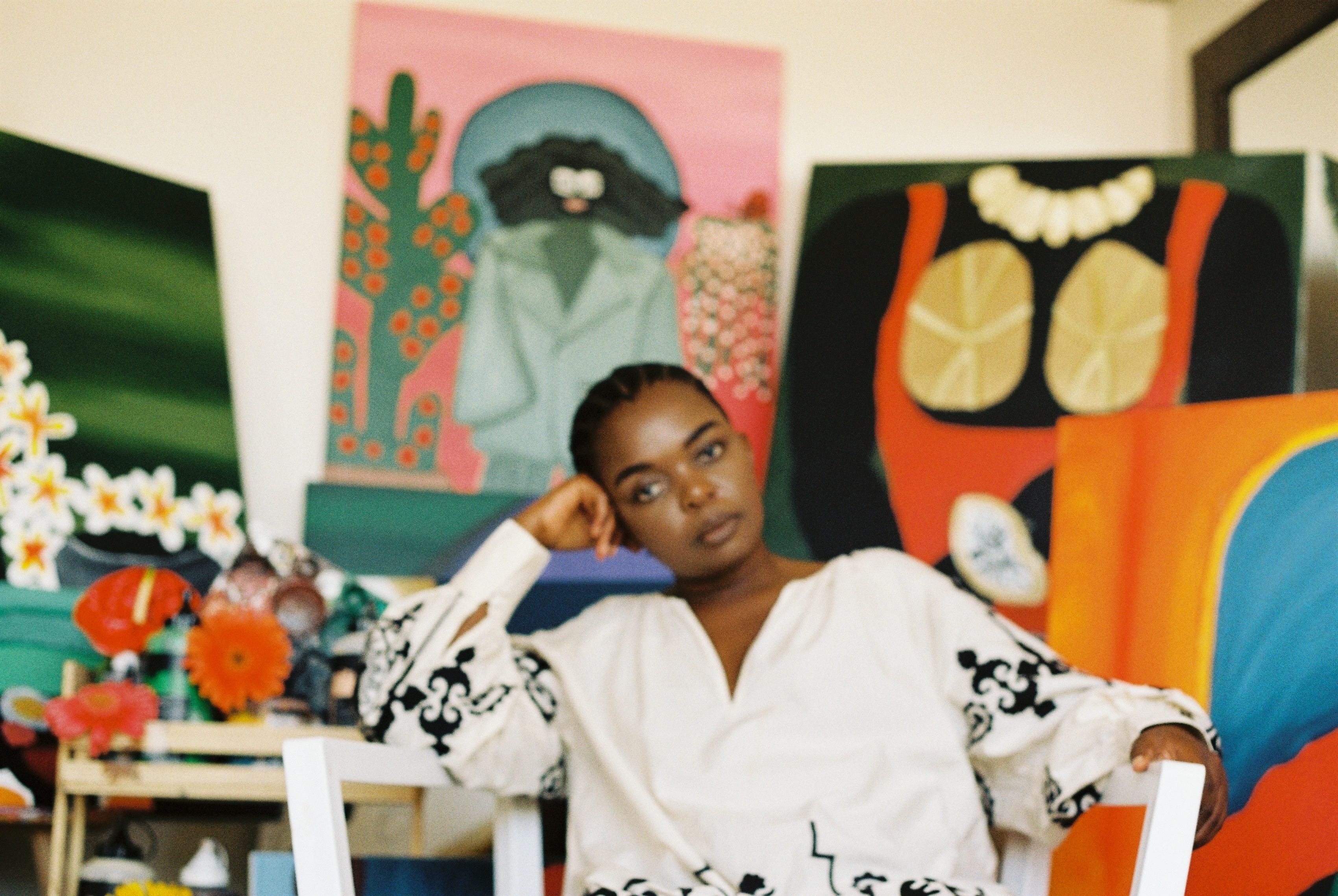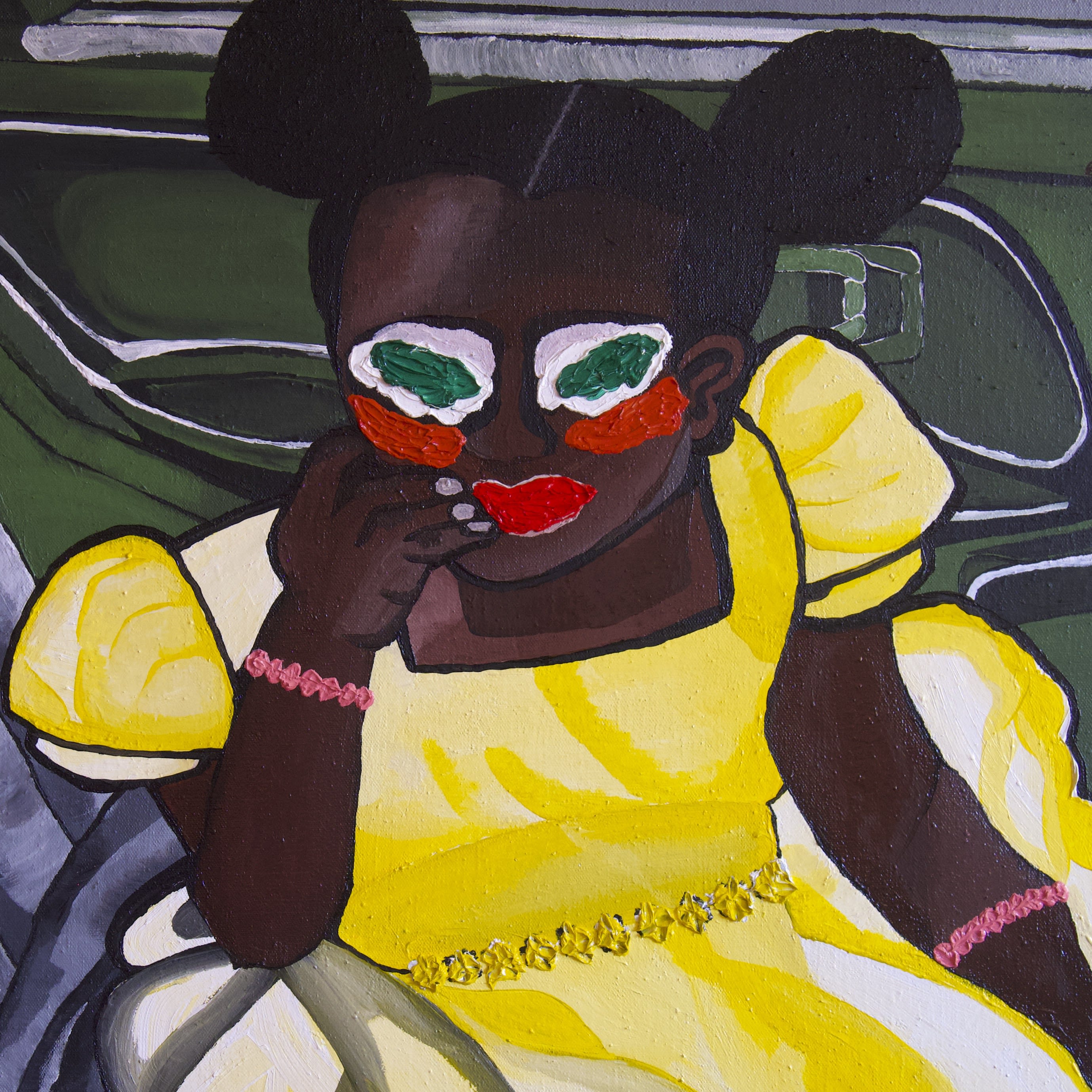
Seoketsa’s residency begins with her seeking to expand her series ‘Amacici’, a Nguni word for ‘earrings’. The series aimed at exploring one of Seoketsa’s repressed childhood longings for adornment and beautification discouraged in her religious upbringing. In dressing her expressionist characters with striking, larger-than-life accessories, she confronted the dogma of modesty and the patriarchal policing of women’s self-expression through dress. It was also an ode to the township women she grew up admiring, who despite unimaginable challenges, asserted their inherent dignity and identity through personal style. This work, transplanted into the French Mediterranean context, takes to new depths.

Set on the coast of Mandelieu La Napoule, the Makwande Art Residency apartment lays at the mercy of a sea as blue as the sky. Promenading along the French Riviera in the spring is a feast for the senses. Medleys of wild, blooming flowers accent terraces, purple bougainvillea hug doorposts, and tip-over balconies. The flowers have much to teach in their determination to adorn life despite the elements or obstacles. Seoketsa sees their essence, and the full embodiment of their purpose – to simply be. The wildlife has thawed and is abuzz, in symphony with a basking accordionist. Streams of people meander past each other, dining leisurely in cafes, at ease. In this cosmic collision of the Mediterranean’s nature and culture, a new colour palette, reminiscent of 70’s art, emerges.

With the residency only a month and a half long, time and her experience of it quickly become pivotal. Centring herself in the present moment is her anchor through the waves of past fears and future anxieties. In fully inhabiting her ‘now’, she allows her environment to carry her process, to see with cleansed eyes. She is worthy and her work is enough. She says of the journey, ‘When I started Amacici I was exploring repressed desires. I have walked the length of that experience and have emerged free of beliefs that no longer serve my authentic existence. Adornment is no longer the centre of the paintings, but the accessories are still featured as signifiers of themes such as time and how it gives us the ability to measure our growth.’ She represents this with surrealist Cartier watches, inscribed with mantras of learned experience. Through memory and emotion, she time travels to a younger self, borrowing from vibrant yellow poppies to depict a child in dress, naïve and pure. Seoketsa’s vibrant palettes calls in the audience of bees and ants we see fossilised in her paintings.

Many women in developing nations have little respite from the demands of life, making simple pleasures a luxury. She observes from coastal French women the daily practice of gathering beauty and joy, of investing in ease and rest. Their essence and confident translation of personality into dress and jewellery, inspires the evolution of her abstract female form. What began as portraits in ‘Ámacici’ evolves into fully formed, bold, black figures, dressed in luxurious colours. ‘’I wanted to memorialise black women, such as my mother, in contexts of ease and leisure. I wanted to place black bodies in an environment of abundance and softness. Their aura and postures are a nod to Malik Sidibe’s photography.’ Seokesta says.

‘A new place forces you to let go. You can’t stay the same because your environment informs the decisions you make. I have had to graft myself into a new way of life, to expand my identity.’ This change is evident in stronger 3-dimensional oil works on larger canvasses. ‘The residency has accelerated the development of my artistic technique and conceptualisation. I have achieved in a month what would have easily taken a few years.’, she beams, her renaissance palpable.

The works are to be exhibited in the winter of 2023, in London. She hopes that they spark hope and reinvention in collectors and enthusiasts. A reminder to simply be. Black women can be resilient and soft all at once. When asked what she looks forward to about the exhibition, she replies, ‘I wish for new eyes, to see the works as the audience would see them.’ It is the desire of all artists to meet their work again for the first time. Her vulnerability is inspiring, her work is transfixing. Oh, how lush, how beautiful.

